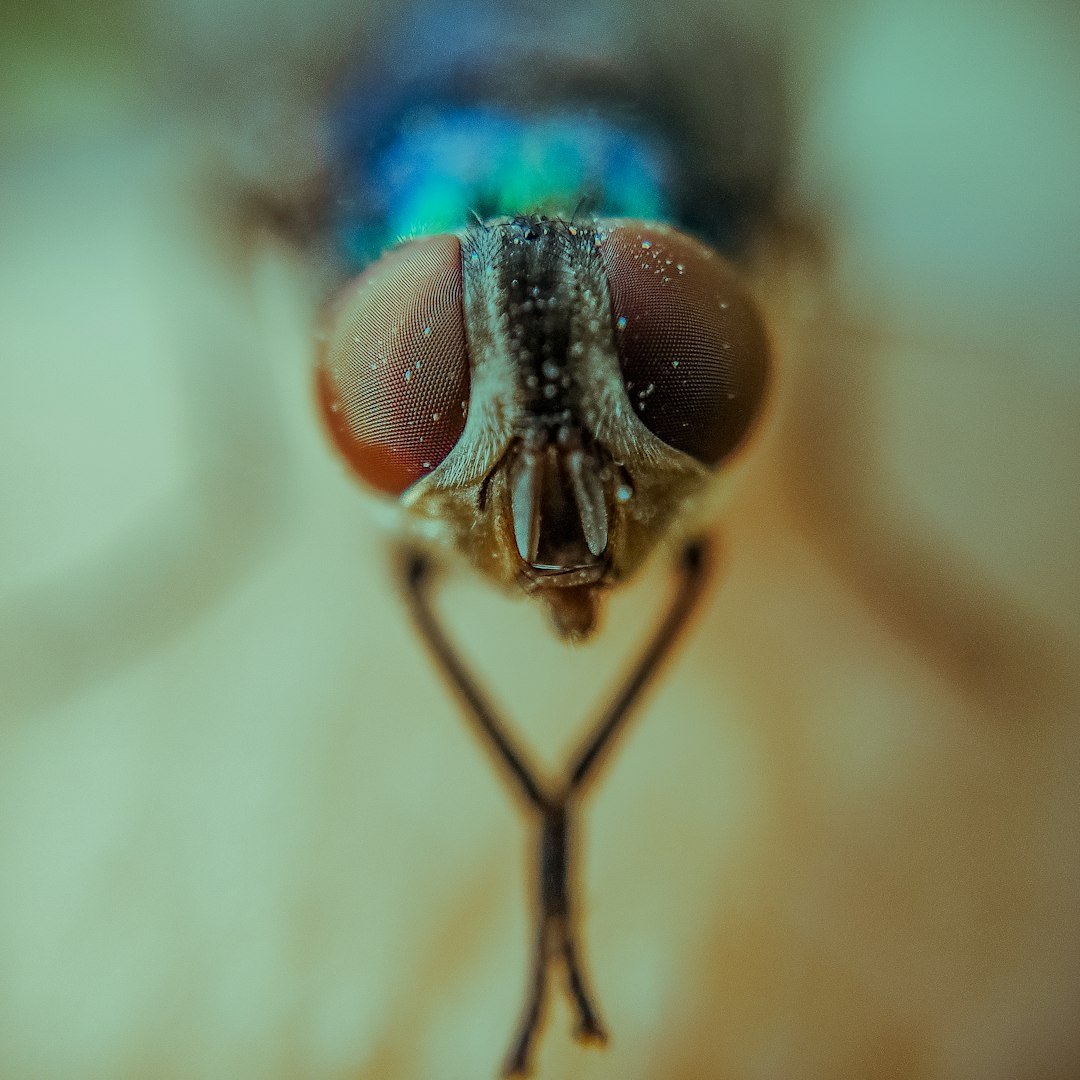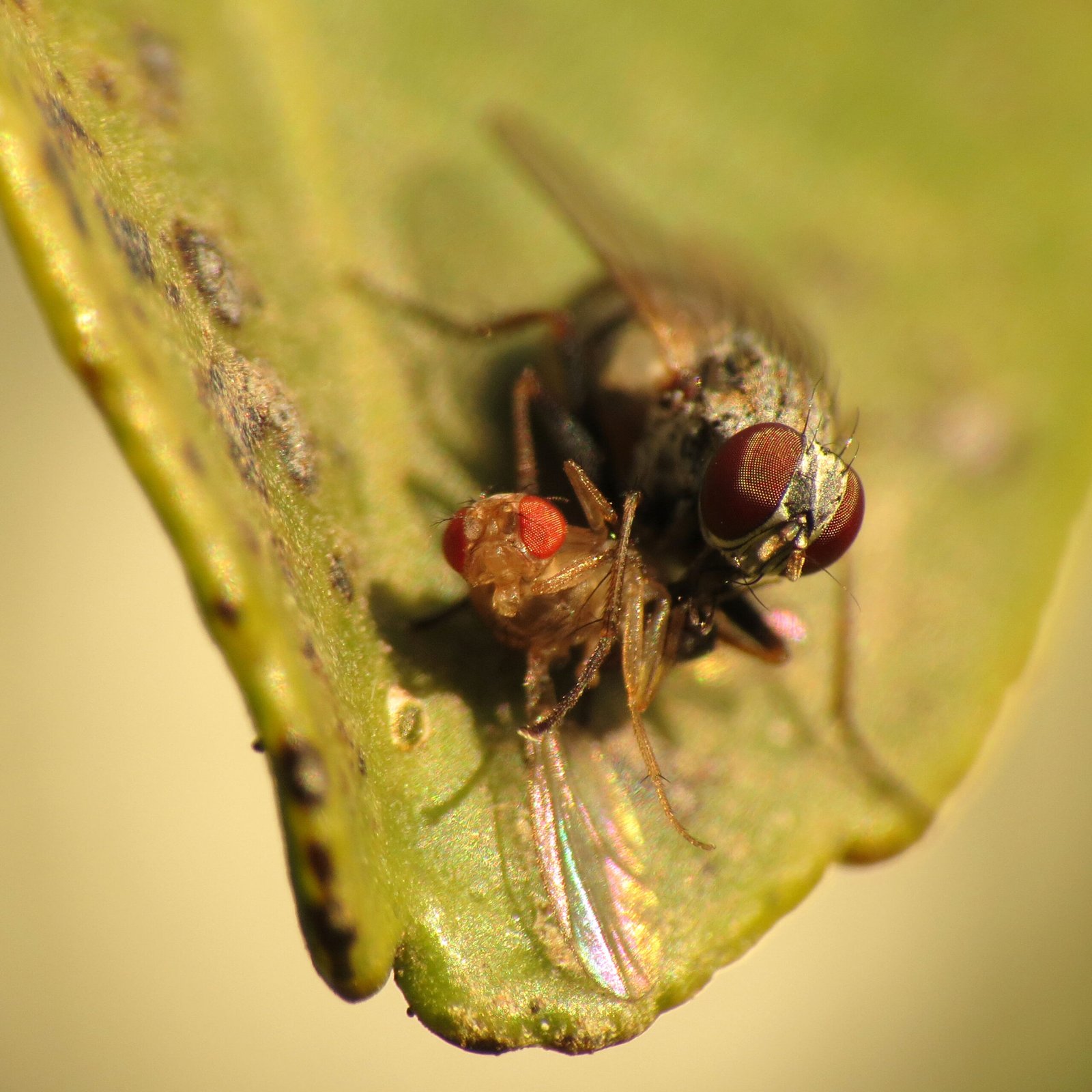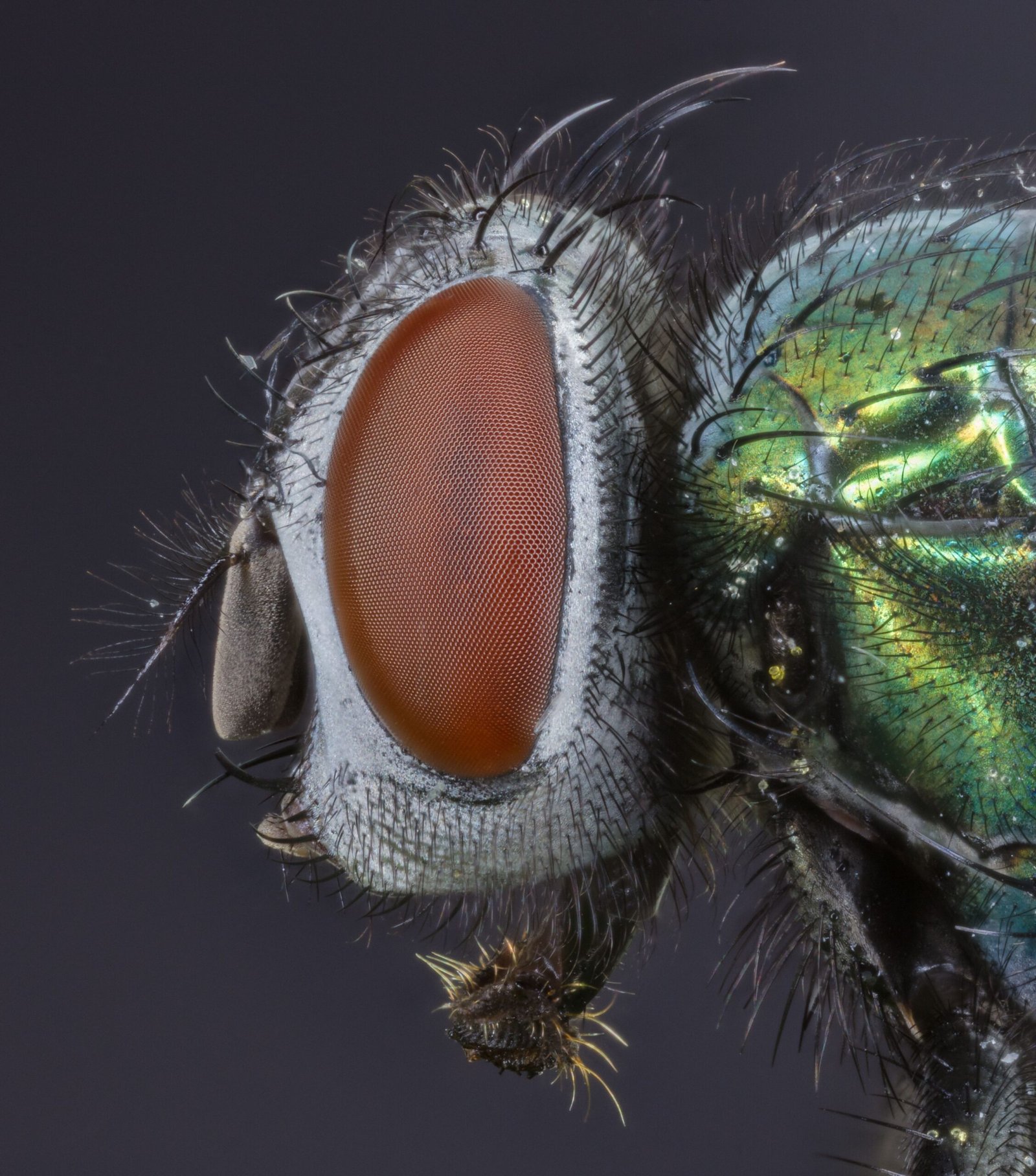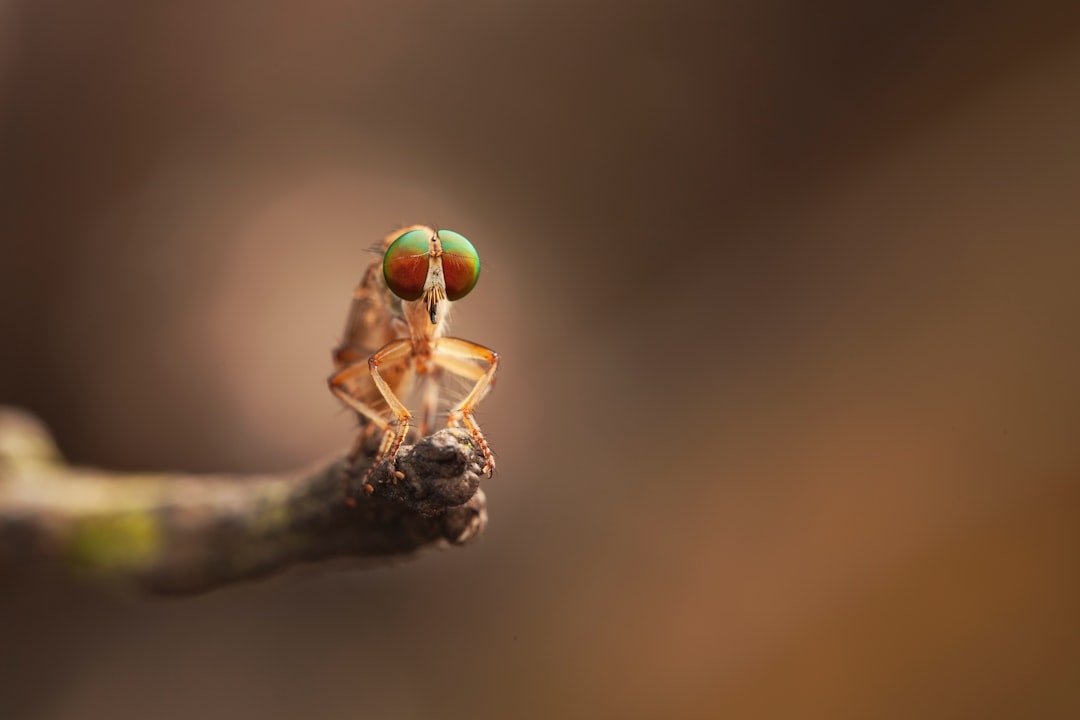On a hot afternoon in a scrubby meadow, a speck of a hunter lifted off a grass blade and vanished in a straight, ruthless line. A heartbeat later, it reappeared with another insect pinned beneath it, like a tiny prizefighter landing a clean right. For a long time, biologists assumed such aerial takedowns demanded big eyes, big brains, or brute force. The new story is stranger and smarter: some robber flies, tinier than a grain of rice, use exquisite vision and lightning-fast guidance to deliver hits that feel instantaneous to their prey. The mystery is not raw speed alone – it’s how something so small sees, decides, and strikes before a target knows it’s in danger.
The Hidden Clues

Start with the eyes. In certain robber flies such as Holcocephala, a small patch in each compound eye is packed with oversized lenses that sharpen detail far beyond what their size suggests. That specialized “sweet spot” acts like a telephoto window, letting the fly pick out a moving speck against a messy backdrop of leaves and glare. Seeing is only half the trick, though; the fly must also decide – fast – whether a blip is food or noise.
When the decision is made, the turn to attack is abrupt and unapologetic. High‑speed recordings show the predator locking on and steering into a collision course in a fraction of a second. That lock-on is not a random lunge but a tidy geometry problem solved on the wing, keeping the target in a constant bearing until impact. To prey items, the result feels like a sudden punch from nowhere.
A Predator the Size of a Grain of Rice

Holcocephala robber flies are only a few millimeters long, yet they can detect and intercept prey at distances that, scaled to our size, would feel like spotting a moving almond across a soccer field. Their brains are minuscule, but their behavior is crisp: take off, fix the angle, adjust for drift, and close. That kind of sensory-to-motor pipeline is the opposite of clumsy; it’s deliberate minimalism tuned by evolution.
I’ve watched a larger robber fly in prairie light do this – lift, veer, and end the chase before my camera’s autofocus woke up. It’s not the brute spectacle of a mantis shrimp caving in a snail, but the feeling is the same: a hit that lands before you finish the thought. The fly’s “punch” is an aerial tackle powered by precision rather than stored spring energy. Small doesn’t mean slow; it means efficient.
From Field Tricks to Lab Truths

To measure a blur, researchers staged controlled hunts. In one clever setup, scientists teased robber flies into launching at a bead on a filament, capturing the intercepts with synchronized high‑speed cameras. Frame by frame, they reconstructed the fly’s trajectory to show how it updates its course mid‑chase and still arrives at the right place at the right time. Other teams paired field observations with micro‑CT scans to map the visual hardware that makes those decisions possible.
The picture that emerges is a layered workflow: a sensitive visual hot spot flags the target, simple steering rules stabilize pursuit, and flight muscles execute compact corrections rather than wasteful flailing. Crucially, the approach is robust outdoors, where wind gusts, glare, and clutter would scramble fancier algorithms. That real‑world reliability is exactly why engineers keep peeking over the shoulders of these flies for guidance.
Inside the Strike: Vision, Math, and Muscle

Robber flies attack with guidance strategies that echo the math used in missile interception: keep the prey at a constant bearing while closing the gap, and you’re on track for contact. Because their eyes update quickly and at high contrast, they can apply that rule in real time, trimming errors with tiny corrective flicks of wing and body. The payoff is a near-instant hit that looks like a ballistic punch, even if the physics are different from a spring-loaded strike.
For context, the fastest literal punches in nature belong elsewhere. Mantis shrimp clubs accelerate at rates comparable to a small-caliber bullet underwater, and snap‑jaw ants close mandibles at blistering speeds using latch‑spring systems. Robber flies don’t do that; they do something equally elegant – turn information into action with almost no delay. The impact is the culmination of guidance done right, not a catapult unleashed.
- Tiny robber flies can detect and intercept prey in well under a second at distances on the order of half a meter relative to their body size.
- A specialized acute zone in the compound eye boosts spatial resolution where it matters most.
- High‑speed videography reveals constant‑bearing interception and rapid mid‑course corrections in cluttered outdoor scenes.
From Ancient Tools to Modern Science

Nature’s fastest hits often rely on latch‑mediated springs – store energy slowly, release it explosively. Trap‑jaw ants, termites with scissor‑jaws, and mantis shrimp all lean on that trick. Flies take another route: leveraging continuous muscle power and aerodynamic control, they compress decision and movement into a single, smooth arc. That’s a profound contrast in design philosophy for solving a similar problem – deliver force at the right place and time.
Seeing both strategies side by side reframes what “speed” even means. One path turns anatomy into a biological crossbow; the other uses sensor fusion and timing to land an aerial tackle. Engineers can borrow from both toolkits, blending springy materials for sudden force with guidance rules that sip computational power. The end goal is the same: decisive, reliable performance in messy, moving worlds.
Why It Matters

Ultrafast, low‑power decision‑making is the bottleneck for many machines we want in the air: tiny drones that navigate orchards, robots that pollinate delicately, sensors that intercept invasive pests without collateral damage. Robber flies show that you don’t need a supercomputer to steer with confidence; you need good eyes where it counts and simple rules that hold up under stress. Compared with traditional control systems that drown in data, a fly’s approach is lean and fast.
This matters far beyond insects. In wildlife biology, it reframes predator–prey interactions by emphasizing guidance and perception, not just raw force. In conservation, it hints at the invisible services of aerial predators, which can naturally suppress pest outbreaks if we leave habitats intact. And in human tech, it argues for designs that prioritize robust perception and agile control over flashy horsepower that fails in the field.
Global Perspectives

Robber flies are a cosmopolitan family, found on every continent except Antarctica, and their styles of hunting map onto local realities. Grassland species skim low and fast, forest species thread through layers of shade and stray sun, and dune specialists launch from open sand where heat shimmers warp vision. What ties them together is a reliance on clean sightlines and perches that give them a fraction of a second’s advantage.
That makes them vulnerable to the same pressures squeezing other aerial insect predators. Pesticide drift can thin their prey base and dull their senses, while habitat homogenization strips away the perches and patchy light they use to work. In agricultural mosaics that still host hedgerows and native plants, they often persist and may contribute to natural pest control. In sterile fields, they fade, taking their silent policing with them.
The Future Landscape

Three technical threads are converging: faster outdoor imaging, finer neural mapping, and better bio‑inspired flight control. Portable high‑speed rigs are moving from lab benches to field edges, capturing genuine hunts in harsh light and wind. At the same time, improved reconstructions of fly visual systems are clarifying which photoreceptors and neural circuits feed the acute zone that locks onto motion. Put together, those data can be distilled into rules engineers can actually implement.
On the robotics side, micro‑aerial vehicles are getting lighter, tougher, and more nimble, with control loops that can execute constant‑bearing intercepts while dodging obstacles. The next challenges are the gritty ones: keeping sensors reliable in dust and glare, running guidance on coin‑cell power, and making decisions that are safe around people and wildlife. If we crack those, we’ll see swarms of tiny helpers that steer more like robber flies and less like wobbling toys.
Conclusion

If this story grabbed you, start by noticing the hunters in your own backyard. Plant small patches of native grasses and wildflowers to create perches and prey diversity, and avoid broad‑spectrum pesticides that flatten the food web those predators rely on. Snap photos of robber flies you spot and share them on community‑science platforms to help researchers map distributions in real time. If you’re in a position to do more, support local land trusts that stitch together hedgerows and field margins where these insects thrive.
On the science side, consider backing university field stations, natural history collections, and open‑data projects that turn chance sightings into insight. Small predators teach big lessons when we give them room to hunt.

Suhail Ahmed is a passionate digital professional and nature enthusiast with over 8 years of experience in content strategy, SEO, web development, and digital operations. Alongside his freelance journey, Suhail actively contributes to nature and wildlife platforms like Discover Wildlife, where he channels his curiosity for the planet into engaging, educational storytelling.
With a strong background in managing digital ecosystems — from ecommerce stores and WordPress websites to social media and automation — Suhail merges technical precision with creative insight. His content reflects a rare balance: SEO-friendly yet deeply human, data-informed yet emotionally resonant.
Driven by a love for discovery and storytelling, Suhail believes in using digital platforms to amplify causes that matter — especially those protecting Earth’s biodiversity and inspiring sustainable living. Whether he’s managing online projects or crafting wildlife content, his goal remains the same: to inform, inspire, and leave a positive digital footprint.




